Theme Parks & Themed Entertainment
What inspired the Imagineers to build the Tower of Terror? Would you believe an attraction at a Six Flags theme park?
Jim Hill’s back with an old favorite from the archives. Which details how Magic Mountain’s Freefall ride eventually led to the creation of one of the more terrifying attractions ever to appear in a Disney theme park

I know, I know. JHM hasn’t exactly been playing its A game lately. For which I apologize.
You see, this past 10 days or so, I’ve been on divorced daddy duty. Which first involved flying from Manchester, NH all the way to Honolulu, HI, so that I could collect my beautiful 12-year-old daughter, Alice. Then she & I reversed that process. Flying all the way back to New England just so that Alice could then spend the next two weeks reconnecting with various members of the Hill clan.
As you might imagine, what with all the traveling that’s involved with doing something like this, the large chunk of time that I normally devote each day to writing and/or researching new stories for JHM has shrunk down to almost nothing lately. Now add to this mix some rather challenging houseguests who’ve been visiting with Alice, Nancy and I this past week or so as well as a death in the family … What was once a little free time that I could then use for writing has now turned into less than nothing.
Which is why — rather than hurriedly slapping together a new piece for today — I’m going to follow a suggestion that longtime JHM reader Frank just sent me via e-mail. His note (which Frank sent me yesterday) reads as follows:
Just a quick note from a long-time reader. Seeing that I’m really fond of Jim’s stories of rides that never make it of the drawing board, I’ve spent the last week digging through the JHM archives. I happened to stumble across a series of articles on the original Tower of Terror, which are externally hosted at tower-of-terror.com. Seeing that Disneyland Resort Paris will soon welcome its own version of the Tower, I was quite interested in this tale of the creation of the original. Unfortunately, the tower-of-terror.com website appears to be offline.
Do you happen to have those articles lying around somewhere in a dusty and dark archive? If so, I would love it if you could re-publish them on the site.
Let me just add a short thank you to this quick email, because I’ve spent many interesting hours at the JHM website reading about the Walt Disney Company’s theme parks history, present, future and future that never was.
Thanks folks! As an industry insider, I really enjoy reading about “the competitor”. Keep up the great work!
Yours sincerely,
Frank
Per Frank’s request, here’s a lightly rewritten version of one of those articles that I did for tower-of-terror.com back in 2002.
Falling in France
Just ask the bellhops who work at Disney-MGM Studio theme park. They’ll tell you all about the weird questions that guests ask them about this amazing attraction. “Is this really a ride?” “Can I go up partway, but get out before the final drop?” and (my personal favorite) “How come Disney hasn’t repaired the hole in the front of the building yet?”
But the big questions, the really important questions — like “How did the Imagineers ever come up with the concept for such an outrageous show?” — these same tourists never seem to find the time to ask. Maybe it’s because their brains are still scrambled by the time they reach the off-load area. Or maybe it’s just because these folks are already trying to figure out what they want to ride next at Disney-MGM.
Well, I know you Tower of Terror fans. You’re definitely a different breed of cat. You guys are always itching to learn more about your favorite theme park attraction. Which is why — today — we’re going to begin an exploration of the REAL origins of this attraction.
And — believe it or not — this story doesn’t actually begin where you thought it might. Not inside those non-descript warehouses that house Walt Disney Imagineering and/or inside the mind of Rod Serling. No, the tale of Disney-MGM’s Twilight Zone Tower of Terror actually gets underway inside a theme park. Just not a Disney owned one.
Copyright 1988 The Walt Disney Company
To really understand how this ride came about, you need to come back with me to the summer of 1982. That’s when Magic Mountain in Valencia, CA. unveiled its latest thrill ride: Freefall.
Back in those days, Freefall (which was developed by Intamin AG, by the way) was considered pretty cutting edge stuff. Immediately upon boarding the attraction, Magic Mountain guests would strap on a safety harness. Their four-passenger car would then slide backwards into the drop tower before zooming up 87 feet. Then their vehicle would slowly slide out to the edge of the drop tower, when suddenly…AIEEE! These guests would be plummeting straight toward the ground at 55 MPH. The next thing they knew, these folks were flat on their backs as their ride vehicle tipped backwards as it zoomed out toward the end of Freefall’s L-shaped ride track.
The total length of their trip? 20 seconds. The amount of time that guests typically stood in line before getting their chance to ride Freefall? Sometimes as long as 2 to 3 hours. But Magic Mountain visitors seemed happy to do it. Putting up with the overly long lines, I mean. All for the chance to experience that one-of-a-kind feeling of free-falling through space.
Of course, these impossibly long lines full of happy theme park guests didn’t go un-noticed by Magic Mountain’s competitors. Particularly the folks at WED (AKA Walt Disney Imagineering). At the time, the Imagineers were just buttoning up their work on Epcot Center and Tokyo Disneyland. And these guys were itching for some new challenges.
Copyright 1988 The Walt Disney Company
And here was this then state-of-the-art technology that Magic Mountain guests were obviously going ape over. So the Imagineers began to wonder: “How could we adapt this Intamin technology for use inside a Disney theme park?”
You see, the real problem was (at least back during this era in the company’s history) that Disney didn’t do bare bones rides like Freefall. The time honored Disney tradition called for all of its theme park shows to have strong overlays of story elements built into each attraction to enhance the guest’s experience.
Take — for instance — Space Mountain. To be perfectly honest about it, Space Mountain at both Walt Disney World & Disneyland is a fairly tame steel coaster. Were you to ride the Tomorrowland attraction while its work lights were on, you’d be amazed at how slowly you appear to be moving.
Ah, but Disney doesn’t allow its guests to ride Space Mountain while the attraction’s work lights are on, now do they? Which is why– as you zoom through the darkness aboard this Tomorrowland thrill ride, never quite knowing when the next dip or turn is coming — it really is quite thrilling.
Copyright 1989 The Walt Disney Company
But to hear the Imagineers tell it, the real key to Space Mountain’s continued success with theme park guests isn’t because you get to ride around on a roller coaster in the dark. It’s because of all of that space-themed material that you get to walk by as you make your way to Space Mountain’s boarding area. These are the elements that actually set the stage for the guests. Placing them inside the story. Making them aware that they’re about to embark on this out-of-this-world experience.
This — in a nutshell — is what the Imagineers consider the Disney difference. Taking a Plain Jane steel coaster like Space Mountain and — by placing the ride inside a darkened show building as well as inserting space themed elements into the attraction — you end up with a coaster-plus. An evergreen attraction that guests never seem to get tired of riding. Why For? Because — for a few moments at least — they’re taking part in this exciting story.
That’s what the Imagineers were looking to do with Intamin’s Freefall technology. To take this then state-of-the-art ride system and — by folding in a few crucial story elements — create a one-of-a-kind ride experience for Disney’s theme park guests.
But given that Freefall’s most memorable moment — the drop — goes by in just the blink of an eye, how could WDI ever use this technology to try and tell a story? The Imagineers explored all sorts of scenarios. The most obvious choice was to pass off the Freefall technology as something that a mad scientist had cooked up. Some infernal device that was used to…well…frighten people.
Copyright 1989 The Walt Disney Company
This is why — for a while — Freefall actually played an important part in the Imagineers’ plans for Euro Disneyland (AKA Disneyland Paris). You see, the original design for that park’s Discoveryland section called for a large-scale version of Captain Nemo’s secret lair to be built INSIDE of Space Mountain/Discovery Mountain. The third, fourth and fifth floor of the show building would have been where the steel coaster would be located. Whereas the first & second floor (as well as the sub basement area) of the show building …
How should I describe this? Do you know the story of Jules Verne’s “Mysterious Island”? By that I mean the film version that Ray Harryhausen did back in 1961? Well, according to that movie, Captain Nemo and the Nautilus somehow managed to survive the cataclysmic events that came at the end of Disney’s 1954 live action version of “20,000 Leagues Under the Sea.” Nemo then took his crippled ship and hid it in a grotto under a smoldering, somewhat dormant volcano.
This is what the Imagineers were hoping to recreate as Discoveryland’s centerpiece. Guests would walk into the cave-like entrance to what-was-then-called Discovery Mountain and — after their eyes adjusted to the darkness — they’d spy…a full-sized recreation of the Nautilus! Anchored in this secret lagoon that was located right inside Discovery Mountain.
Had this version of Discoveryland actually been built, guests could have had a variety of experiences to choose from while exploring Nemo’s secret lair. They could have walked down a ramp that seemingly took them below the surface of the lagoon and into the Nautilus itself. Here, they would have had the option of touring the sub itself (this — of course — is very similar to the “Mysteres du Nautilus” walk-through attraction that eventually opened at Disneyland Paris in 1994) or dining in high style inside the Grand Salon.
Copyright 1990 The Walt Disney Company
Guests who were looking for something a bit more exciting than a walking tour of a submarine and/or French cuisine would have been well advised to head over to the far side of the lagoon. Why? Because that’s where Nemo’s secret lab was supposed to have been located.
Here, the Captain had supposedly been attempting to harness the power of the volcano. (Oh? Did I forget to mention that — at least in this version of Disneyland Paris’ Discoveryland — that Space Mountain / Discovery Mountain was supposed to have been built right on top of a somewhat dormant volcano? The Imagineers were thinking that Nemo had been using the super heated steam that came up through underground vents to power the Nautilus, all the equipment in his lab, maybe even those spaceships that were supposedly zooming around upstairs inside of “From the Earth to the Moon” AKA “Space Mountain.”)
Anyway… For those guests who were feeling somewhat adventurous, they could board a bare steel elevator that was supposed to take them up to the uppermost rim of the volcano. Once there, these visitors would supposedly have been able to see some unique features of Discovery Mountain (as well as get a great view of the rest of the theme park).
But then — of course — in the grand Disney tradition, once the guests get to the top of Discovery Mountain aboard their rickety steel elevator…SOMETHING GOES HORRIBLY WRONG! Supposedly, there’s some seismic event…which knocks the elevator off its track. Which then sends your ride vehicle hurtling down back into the darkness, reportedly missing giant rock formations and hissing steam vents by mere inches.
Copyright 1990 The Walt Disney Company
Sounds like a pretty fun way to bring Intamin’s Freefall technology on board at a Disney theme park, doesn?t it? Well, the only problem was that this version of Discoveryland was that — with all its bells and whistles — it was going to be hugely expensive. And given that the Walt Disney Company was already pouring hundreds of millions of Euros into the creation of the rest of the Euro Disneyland Resort, there just wasn’t enough money in the budget to cover the creation of a secret indoor grotto for Captain Nemo. Which is why the Nautilus eventually ended up parked outside of Discovery…er…Space Mountain.
And — since Nemo’s secret lab was no longer a featured attraction in Discoveryland — there was no reason for the Imagineers to go forward with their plans to build a Freefall-like ride as part of the opening day attractions at the Euro Disneyland Resort.
But that’s okay, gang. Because great ideas never die at WDI. Particularly when there are places like Disney-MGM Studios Theme Park that are (as of the early 1990s) woefully short on thrills.
And that part of the story … We’ll save for another time …
FYI: For those of you who enjoyed all of the Discoveryland concept art that was used to illustrate today’s article, all of the images were cribbed from Didier Ghez’s excellent book, “Disneyland Paris: From Sketch to Reality.” If you’d like to pick up a copy of your very own, you can do so by dropping Didier an e-mail at this address: lawrence55@wanadoo.fr
Beyond that … Alice and I will be flying back to Hawaii this coming Wednesday. Once I hand my daughter off to her mom (The Fabulous Shelly Smith), I then start the trip back to New Hampshire on Thursday morning. Allowing for a slight case of jetlag as well as some post-parental depression, things should start to get back to normal at JHM on or about Monday, July 31st.
Again, my apologies if the pickings have seemed rather lean at this website for the past week or so. I promise that — by the first week of August — JHM will be back to offering its usual selection of big, meaty stories about the Walt Disney Company.
That’s it for today. Now — if you’ll excuse me — I have to go finish packing for the family camping trip that Alice, Nancy and I will be taking tomorrow.
Have a great weekend, okay?
Theme Parks & Themed Entertainment
Disney and Macy’s 90-Year Thanksgiving Day Parade Partnership: From Mickey’s First Balloon to Minnie’s Big Debut
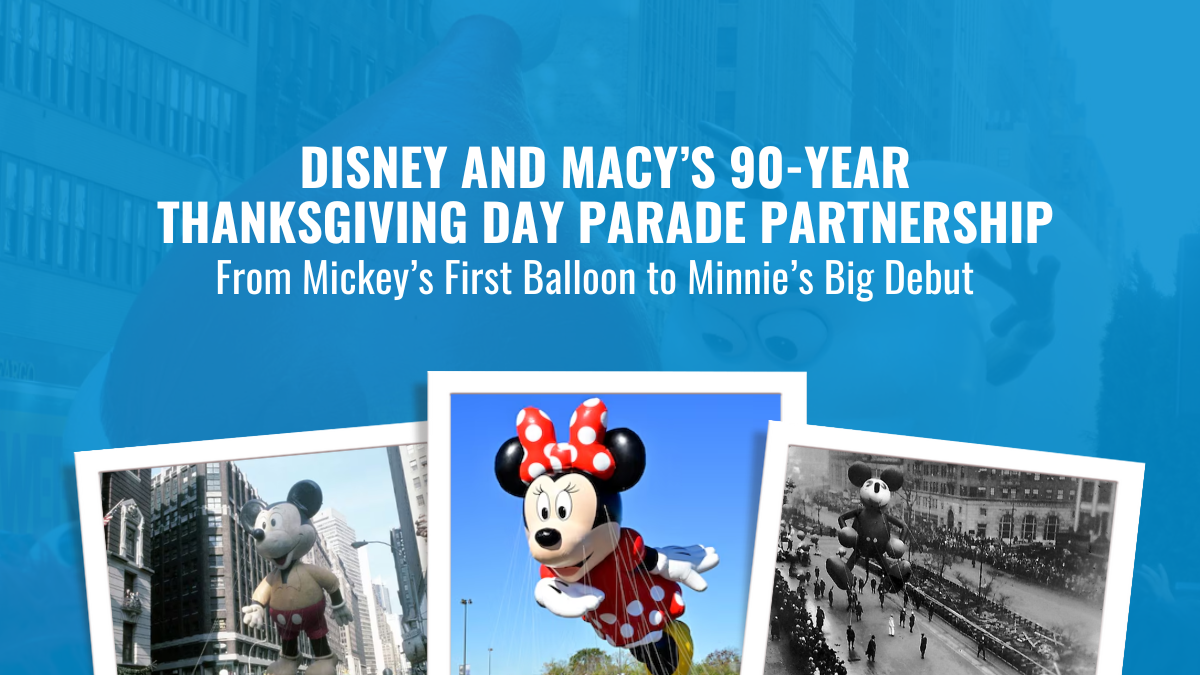
Now, folks, if you’re like me, Thanksgiving just wouldn’t be the same without a coffee, a cozy seat, and Macy’s Thanksgiving Day Parade on the TV. And if you’re really like me, you’re watching for one thing: Disney balloons floating down 34th Street. Ever wondered how Mickey, Donald, and soon Minnie Mouse found their way into this beloved New York tradition? Well, grab your popcorn because we’re diving into nearly 90 years of Disney’s partnership with Macy’s.
The Very First Parade and the Early Days of Balloons
The Macy’s Thanksgiving Day Parade goes way back to 1924, but if you can believe it, balloons weren’t part of the festivities until 1927. That first lineup included Felix the Cat, a dragon, and a toy soldier, all towering above the crowds. Back then, Macy’s had a pretty wild idea to end the parade: they would let the balloons drift off into the sky, free as birds. But this wasn’t just Macy’s feeling generous. Each balloon had a message attached, offering a $100 reward (about $1,800 in today’s dollars) for anyone who returned it to the flagship store on 34th Street.
And here’s where it gets interesting. This tradition carried on for a few years, right up until 1932, when Felix the Cat almost took down a plane flying over New York City! Imagine that—you’re flying into LaGuardia, and suddenly, there’s a 60-foot balloon drifting toward your wing. Needless to say, that was the end of Macy’s “fly away” stunt, and from then on, the balloons have stayed firmly grounded after the parade ends.
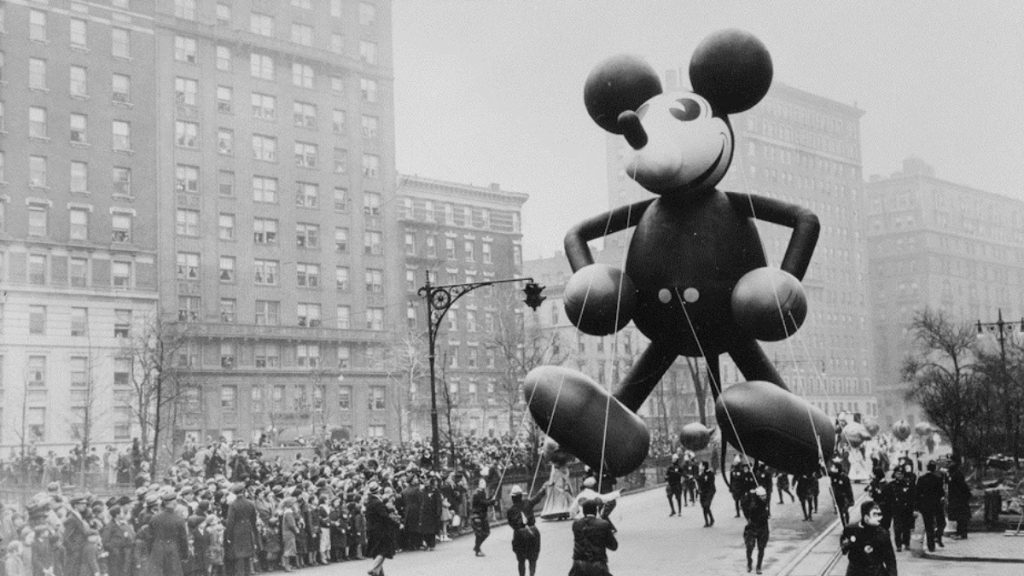
1934: Mickey Mouse Floats In, and Disney Joins the Parade
It was 1934 when Mickey Mouse finally made his grand debut in the Macy’s parade. Rumor has it Walt Disney himself collaborated with Macy’s on the design, and by today’s standards, that first Mickey balloon was a bit of a rough cut. This early Mickey had a hotdog-shaped body, and those oversized ears gave him a slightly lopsided look. But no one seemed to mind. Mickey was there, larger than life, floating down the streets of New York, and the crowd loved him.
Mickey wasn’t alone that year. He was joined by Pluto, Horace Horsecollar, and even the Big Bad Wolf and Practical Pig from The Three Little Pigs, making it a full Disney lineup for the first time. Back then, Disney wasn’t yet the entertainment powerhouse we know today, so for Walt, getting these characters in the parade meant making a deal. Macy’s required its star logo to be featured on each Disney balloon—a small concession that set the stage for Disney’s long-standing presence in the parade.
Duck Joins and Towers Over Mickey
A year later, in 1935, Macy’s introduced Donald Duck to the lineup, and here’s where things got interesting. Mickey may have been the first Disney character to float through the parade, but Donald made a huge splash—literally. His balloon was an enormous 60 feet tall and 65 feet long, towering over Mickey’s 40-foot frame. Donald quickly became a fan favorite, appearing in the lineup for several years before being retired.
Fast-forward a few decades, and Donald was back for a special appearance in 1984 to celebrate his 50th birthday. Macy’s dug the balloon out of storage, re-inflated it, and sent Donald down 34th Street once again, bringing a bit of nostalgia to the holiday crowd.
A Somber Parade in 2001
Now, one of my most memorable trips to the parade was in 2001, just weeks after the 9/11 attacks. Nancy and I, along with our friends, headed down to New York, and the mood was something I’ll never forget. We watched the start of the parade from Central Park West, but before that, we went to the Museum of Natural History the night before to see the balloons being inflated. They were covered in massive cargo nets, with sandbags holding them down. It’s surreal to see these enormous balloons anchored down before they’re set free.
That year, security was intense, with police lining the streets, and then-Mayor Rudy Giuliani rode on the Big Apple float to roaring applause. People cheered his name, waving and shouting as he passed. It felt like the entire city had turned out to show their resilience. Even amidst all the heightened security and tension, seeing those balloons—brought a bit of joy back to the city.
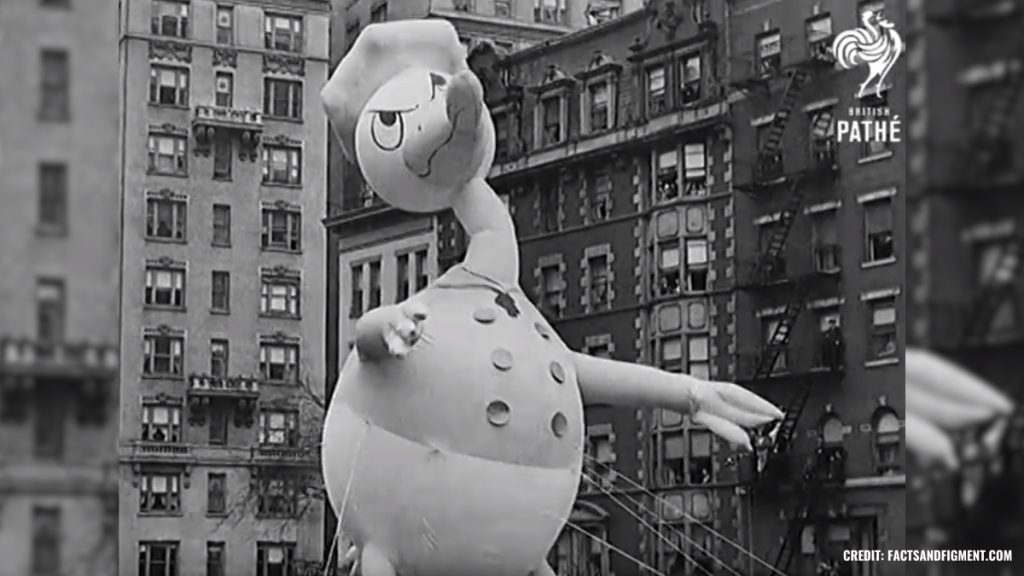
Balloon Prep: From New Jersey’s MetLife Stadium to California’s D23 Expo
Each year before the parade, Macy’s holds a rehearsal event known as Balloon Fest at MetLife Stadium in New Jersey. This is where handlers get their first crack at guiding the balloons, practicing with their parade masters, and learning the ropes—literally. It’s an entire production unto itself, with dozens of people rehearsing to make sure these enormous inflatables glide smoothly down the streets of New York on parade day.
In 2015, Macy’s took the balloon show on the road, bringing their Buzz Lightyear balloon out to California for the D23 Expo. I was lucky enough to be there, and watching Buzz get inflated piece by piece in the Anaheim Convention Center parking lot was something to behold. Each section was filled with helium in stages, and when they got around to Buzz’s lower half, well, there were more than a few gas-related jokes from the crowd.
These balloons seem to have a personality all their own, and seeing one like Buzz come to life up close—even outside of New York—had all the excitement and anticipation of the real deal.
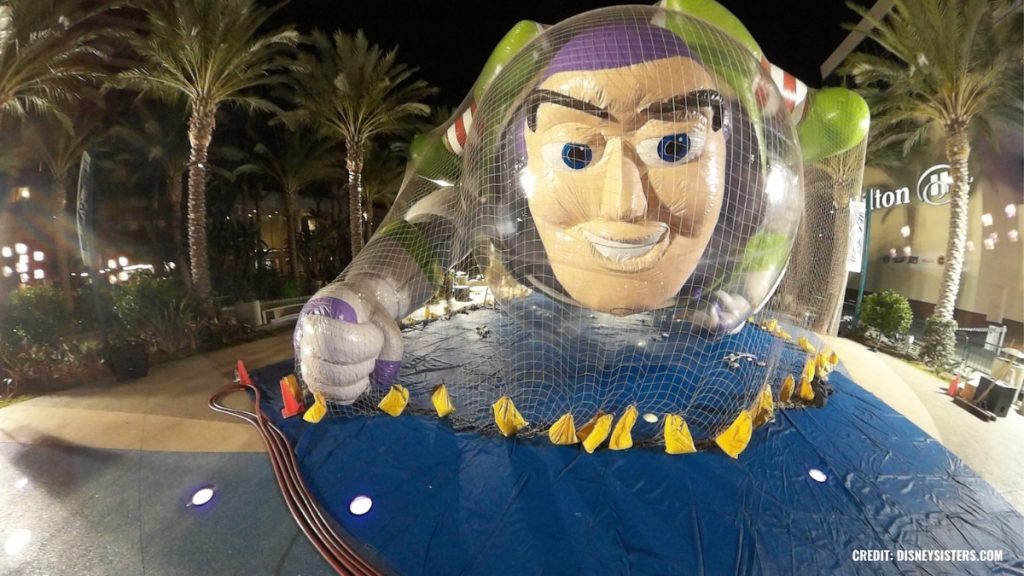
Mickey’s Comeback as a Bandleader and Sailor Mickey
After a long hiatus, Mickey Mouse made his return to the Macy’s parade in 2000, this time sporting a new bandleader outfit. Nine years later, in 2009, Sailor Mickey joined the lineup, promoting Disney Cruise Line with a nautical twist. Over the past two decades, Disney has continued to enchant parade-goers with characters like Buzz Lightyear in 2008 and Olaf from Frozen in 2017. These balloons keep Disney’s iconic characters front and center, drawing in both longtime fans and new viewers.
But ever wonder what happens to the balloons after they reach the end of 34th Street? They don’t just disappear. Each balloon is carefully deflated, rolled up like a massive piece of laundry, and packed into storage bins. From there, they’re carted back through the Lincoln Tunnel to Macy’s Parade Studio in New Jersey, where they await their next flight.
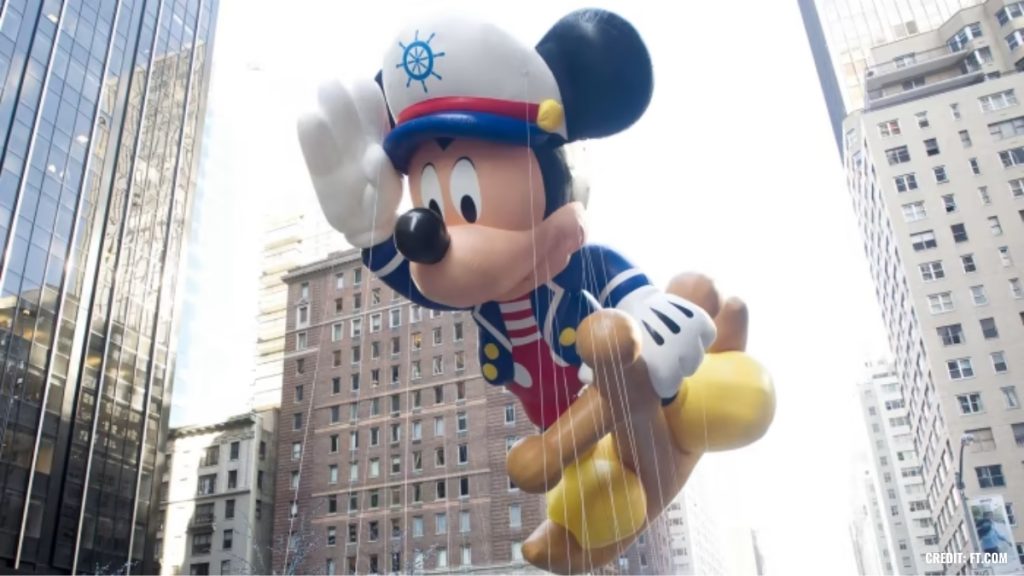
Macy’s Disney Celebration at Hollywood Studios
In 1992, Macy’s took the spirit of the parade down to Disney-MGM Studios in Orlando. After that year’s parade, several balloons—including Santa Goofy, Kermit the Frog, and Betty Boop—were transported to Hollywood Studios, re-inflated, and anchored along New York Street as part of a holiday display. Visitors could walk through this “Macy’s New York Christmas” setup and see the balloons up close, right in the middle of the park. While this display only ran for one season, it paved the way for the Osborne Family Spectacle of Dancing Lights, which became a holiday staple at the park for years to come.
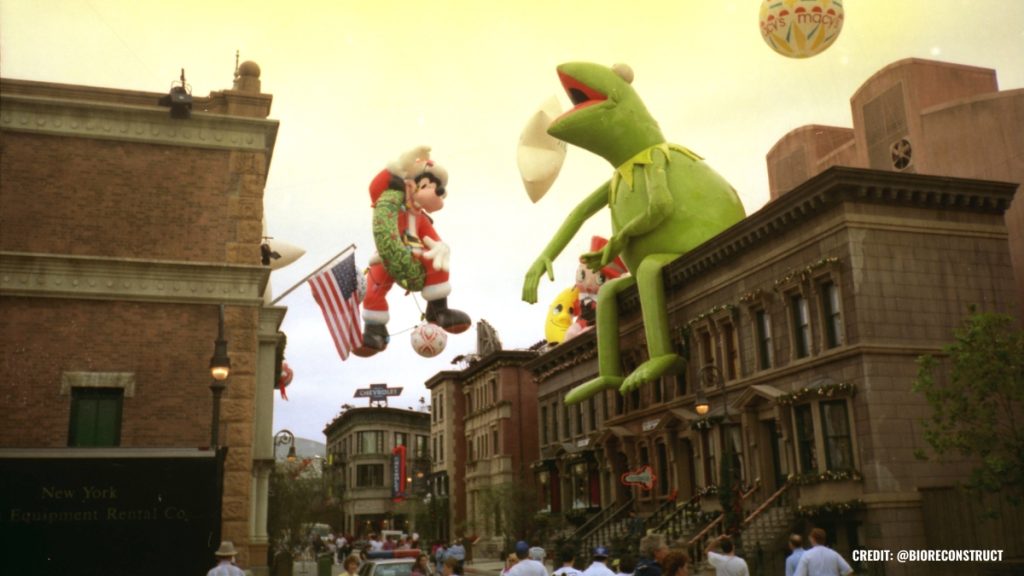
Minnie Mouse’s Long-Awaited Debut in 2024
This year, Minnie Mouse will finally join the parade, making her long-overdue debut. Macy’s is rolling out the red carpet for Minnie’s arrival with special pop-up shops across the country, where fans can find exclusive Minnie ears, blown-glass ornaments, T-shirts, and more to celebrate her first appearance in the Thanksgiving Day Parade.
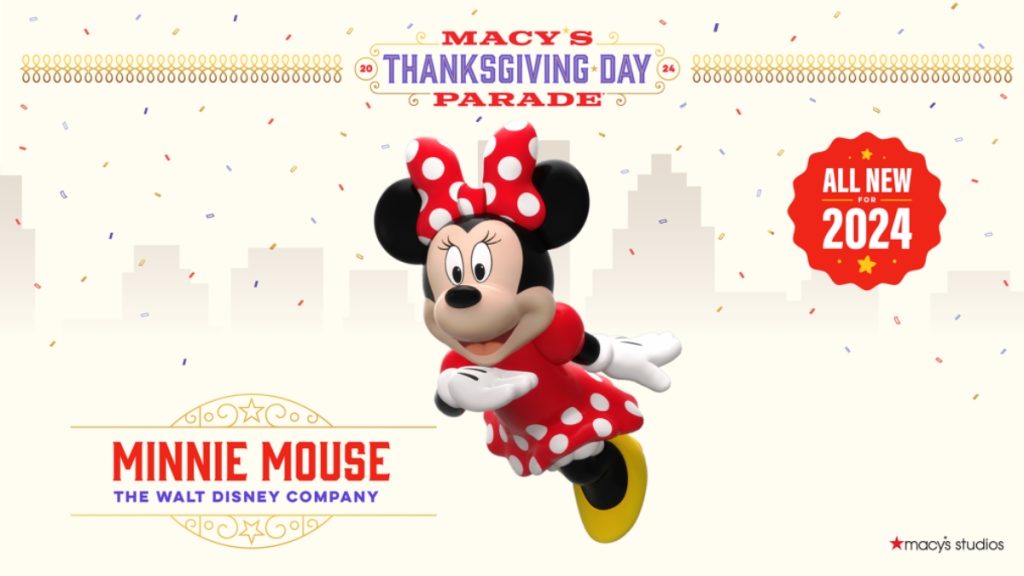
For those lucky enough to catch the parade this year, you’ll see Minnie take her first float down 34th Street, decked out in her iconic red bow and polka-dot dress. Macy’s and Disney are also unveiling a new Disney Cruise Line float honoring all eight ships, including the latest, the Disney Treasure.
As always, I’ll be watching from my favorite chair, coffee in hand, as Minnie makes her grand entrance. The 98th annual Macy’s Thanksgiving Day Parade airs live on NBC, and it’s a tradition you won’t want to miss—whether you’re on 34th Street or tuning in from home.
Theme Parks & Themed Entertainment
Disney’s Forgotten Halloween Event: The Original Little Monsters on Main Street
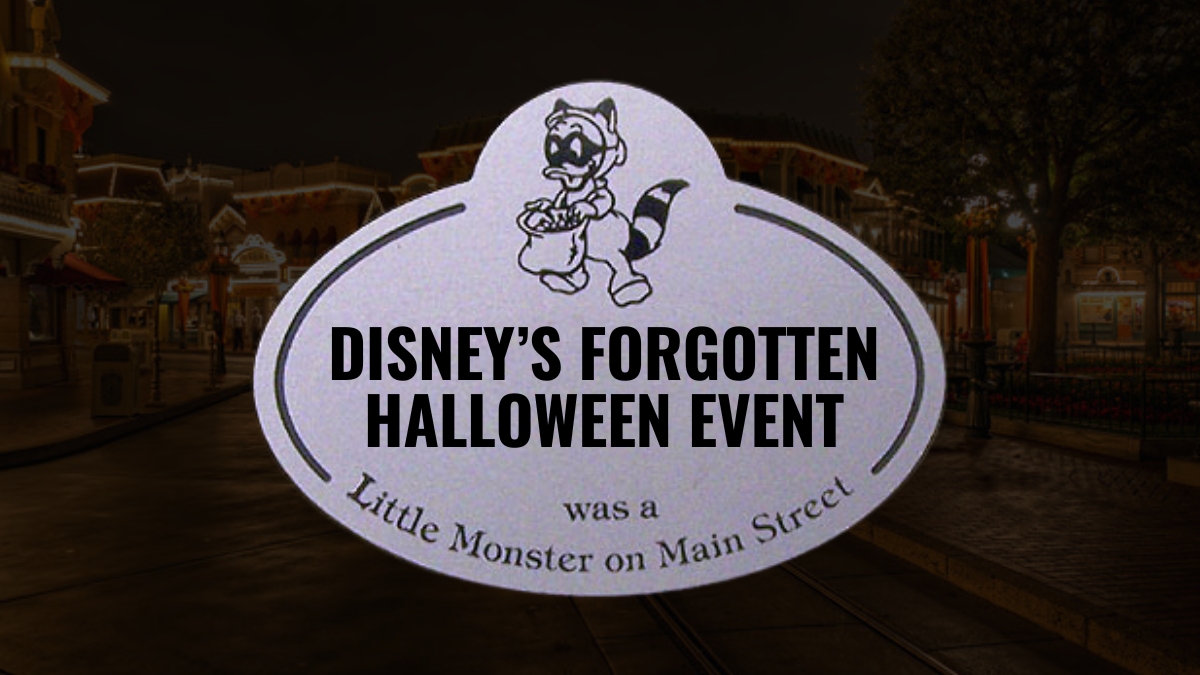
When most Disney fans think of Halloween in the parks, they immediately picture Mickey’s Not-So-Scary Halloween Party at Walt Disney World or the Oogie Boogie Bash at Disneyland Resort. But before those events took over as the must-attend spooky celebrations, there was a little-known event at Disneyland called Little Monsters on Main Street. And its origins? Well, they go all the way back to the 1980s, during a time when America was gripped by fear—the Satanic Panic.
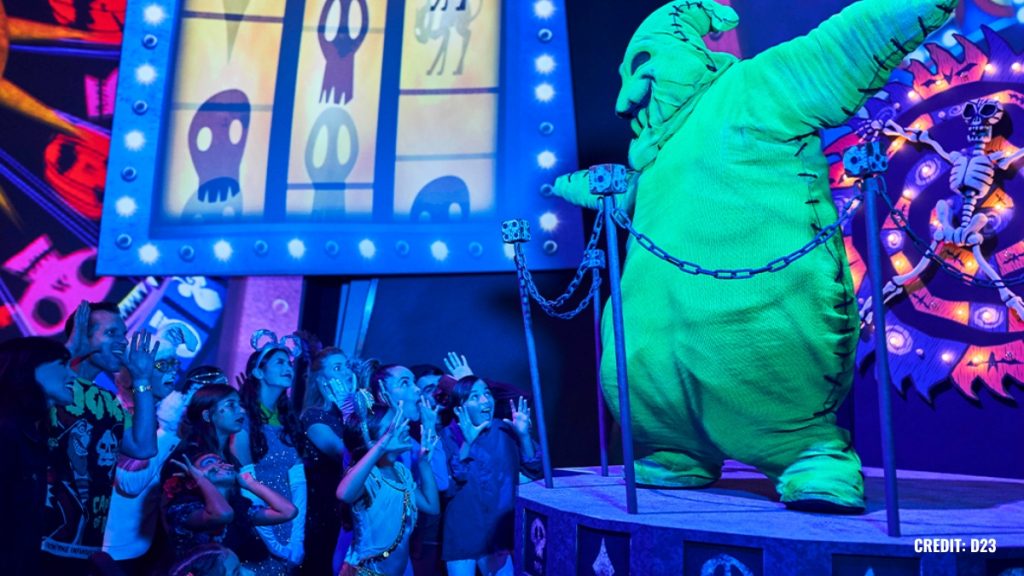
You see, back in the mid-1980s, parents were terrified that Halloween had become dangerous. Urban legends about drug-laced candy or razor blades hidden in apples were widespread, and many parents felt they couldn’t let their kids out of sight for even a moment. Halloween, which was once a carefree evening of trick-or-treating in the neighborhood, had suddenly become a night filled with anxiety.
This is where Disneyland’s Little Monsters on Main Street came in.
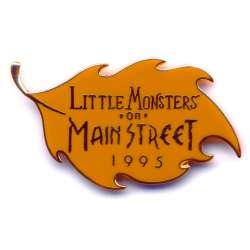
The Origins of Little Monsters on Main Street
Back in 1989, the Disneyland Community Action Team—later known as the VoluntEARS—decided to create a safe, nostalgic Halloween experience for Cast Members and their families. Many schools in the Anaheim area were struggling to provide basic school supplies to students, and the VoluntEARS saw an opportunity to combine a safe Halloween with a charitable cause. Thus, Little Monsters on Main Street was born.
This event was not open to the general public. Only Disneyland Cast Members could purchase tickets, which were initially priced at just $5 each. Cast Members could bring their kids—but only as many as were listed as dependents with HR. And even then, the park put a cap on attendance: the first event was limited to just 1,000 children.
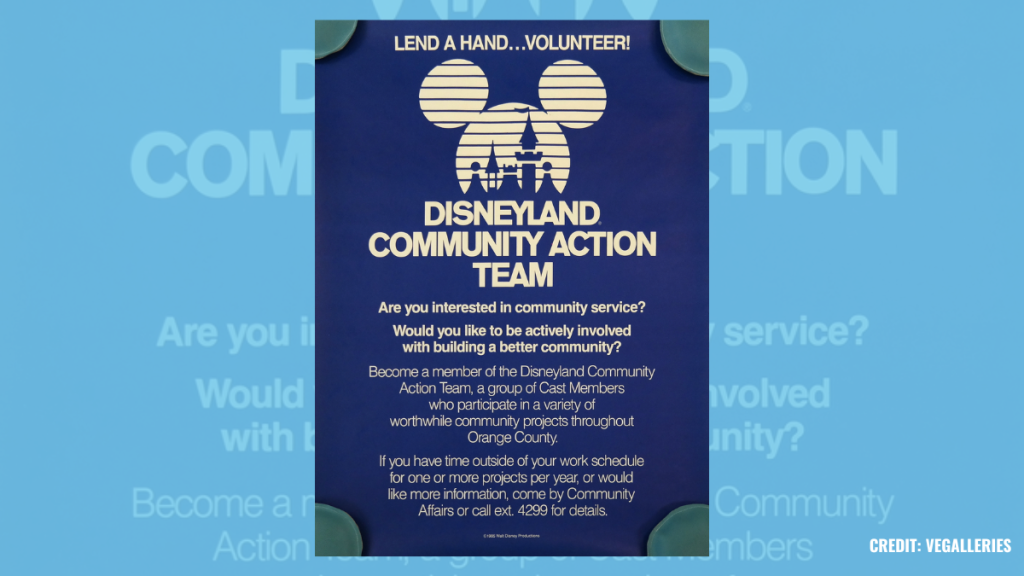
A Unique Halloween Experience
Little Monsters on Main Street wasn’t just another Halloween party. It was designed to give kids a safe, fun environment to enjoy trick-or-treating, much like the good old days. On Halloween night in 1989, kids in costume wandered through Disneyland with their pillowcases, visiting 20 different trick-or-treat stations. They also had the chance to ride a few of their favorite Fantasyland attractions, all after the park had closed to the general public.
The event was run entirely by the VoluntEARS—about 200 of them—who built and set up all the trick-or-treat stations themselves. They arrived at Disneyland before the park closed and, as soon as the last guest exited, they began setting up stations across Main Street, Adventureland, Frontierland, Fantasyland, and Tomorrowland. The event ran from 7:30 to 9:30 p.m., and by the time the last pillowcase-wielding kid left, the VoluntEARS cleaned everything up, making sure the park was ready for the next day’s operations.
It wasn’t just candy and rides, though. The event featured unique entertainment, like a Masquerade Parade down Main Street, U.S.A., where kids could show off their costumes. And get this—Disneyland even rigged up a Cast Member dressed as a witch to fly from the top of the Matterhorn to Frontierland on the same wire that Tinker Bell uses during the fireworks. Talk about a magical Halloween experience!
The Haunted Mansion “Tip-Toe” Tour
Perhaps one of the most memorable parts of Little Monsters on Main Street was the special “tip-toe tour” of the Haunted Mansion. Now, Disneyland’s Haunted Mansion can be a pretty scary attraction for younger kids, so during this event, Disney left the doors to the Stretching Room and Portrait Gallery wide open. This allowed kids to walk through and peek at the Haunted Mansion’s spooky interiors without actually having to board the Doom Buggies. For those brave enough to ride, they could, of course, take the full trip through the Haunted Mansion—or they could take the “chicken exit” and leave, no harm done.
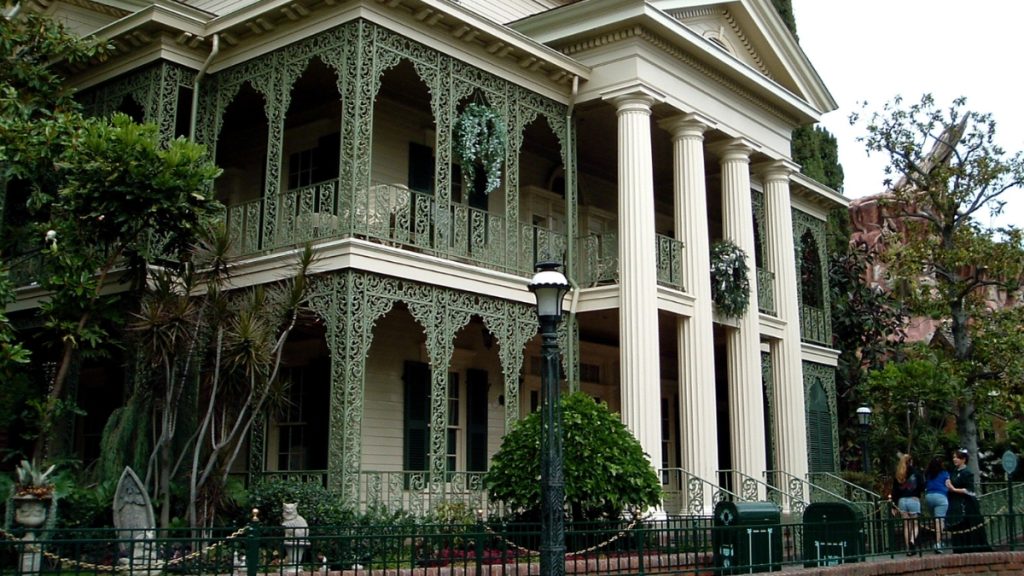
Growing Success and a Bigger Event
Thanks to the event’s early success, Little Monsters on Main Street grew in size. By 1991, the attendance cap had been raised to 2,000 kids, and Disneyland added more activities like magic shows and hayrides. They also extended the event’s hours, allowing kids to enjoy the festivities until 10:30 p.m.
In 2002, the event moved over to Disney California Adventure, where it could accommodate even more kids—up to 5,000 in its later years. The name was also shortened to just Little Monsters, since it was no longer held on Main Street. This safe, family-friendly Halloween event continued for several more years, with the last mention of Little Monsters appearing in the Disneyland employee newsletter in 2008. Though some Cast Members recall the event continuing until 2012, it eventually made way for Disney’s more public-facing Halloween events.
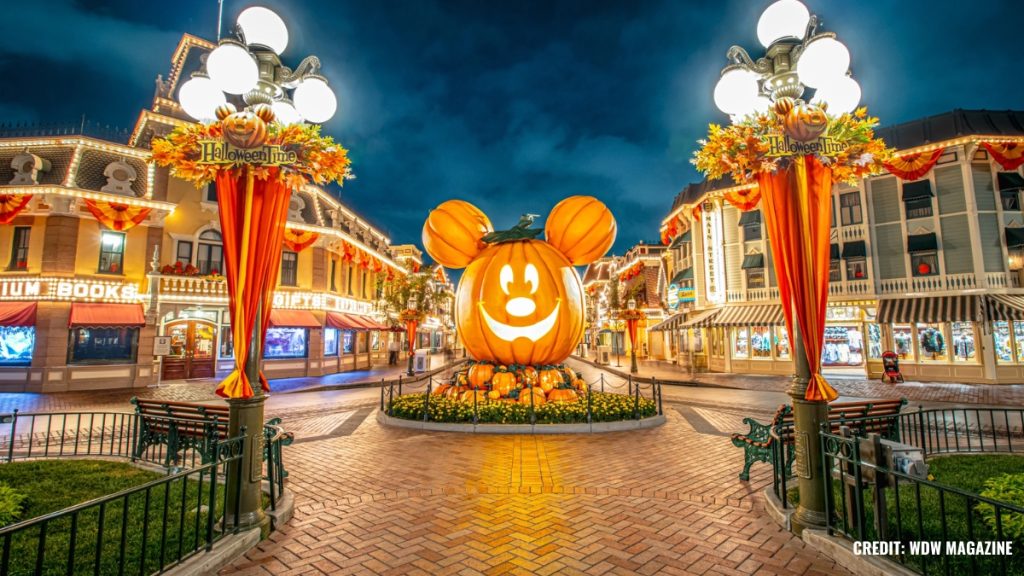
From Little Monsters to Mickey’s Not-So-Scary and Oogie Boogie Bash
Starting in the early 2000s, Disney began realizing the potential of Halloween-themed after-hours events for the general public. These early versions of Mickey’s Halloween Party and Mickey’s Halloween Treat eventually evolved into today’s Mickey’s Not-So-Scary Halloween Party and Oogie Boogie Bash. Unfortunately, this also marked the end of the intimate, Cast Member-exclusive Little Monsters event, but it paved the way for the large-scale Halloween celebrations we know and love today.
While it’s bittersweet to see Little Monsters on Main Street fade into Disney history, its legacy lives on through these modern Halloween parties. And even though Cast Members now receive discounted tickets to Mickey’s Not-So-Scary and Oogie Boogie Bash, the special charm of an event created specifically for Disney’s employees and their families remains something worth remembering.
The Merch: A Piece of Little Monsters History
For Disney collectors, the exclusive merchandise created for Little Monsters on Main Street is still out there. You can find pins, name tags, and themed pillowcases on sites like eBay. One of the coolest collectibles is a 1997 cloisonné pin set featuring Huey, Dewey, and Louie dressed as characters from Hercules. Other sets paid tribute to the Main Street Electrical Parade and Pocahontas, while the pillowcases were uniquely designed for each year of the event.
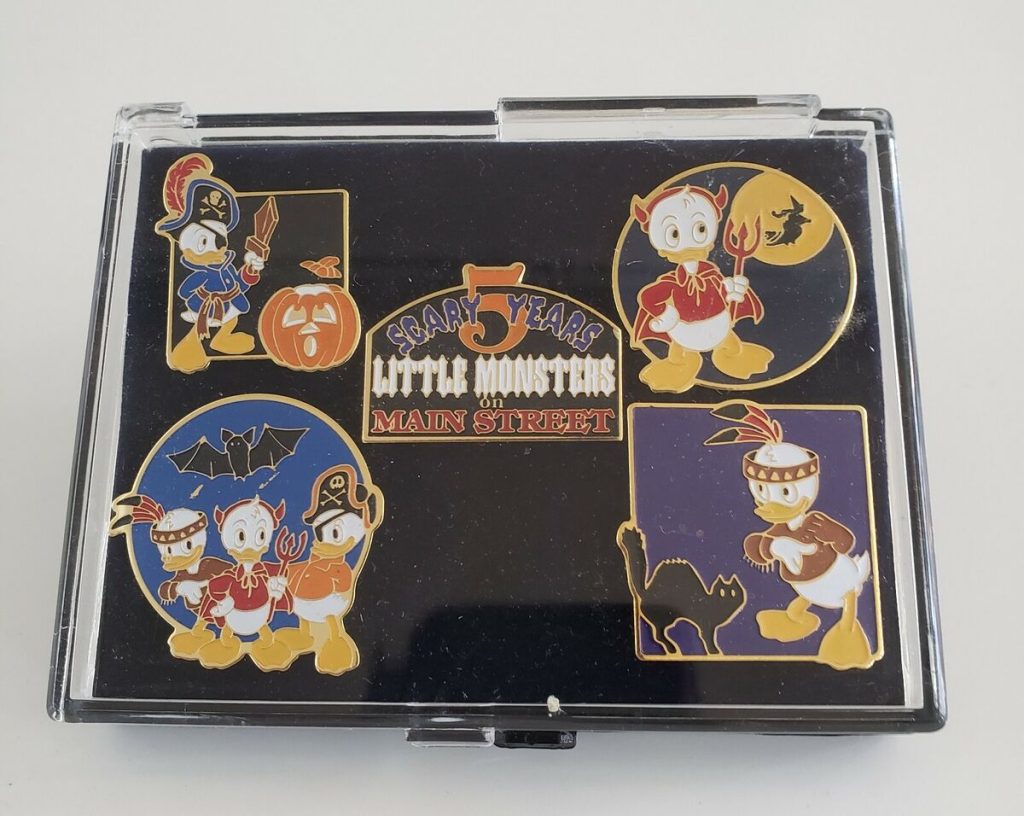
While Little Monsters on Main Street may be gone, it’s a fascinating piece of Disneyland history that played a huge role in shaping the Halloween celebrations we enjoy at Disney parks today.
Want to hear more behind-the-scenes stories like this? Be sure to check out I Want That Too, where Lauren and I dive deep into the history behind Disney’s most beloved attractions, events, and of course, merchandise!
Theme Parks & Themed Entertainment
The Story of Mickey’s Not-So-Scary Halloween Party: From One Night to a Halloween Family Tradition
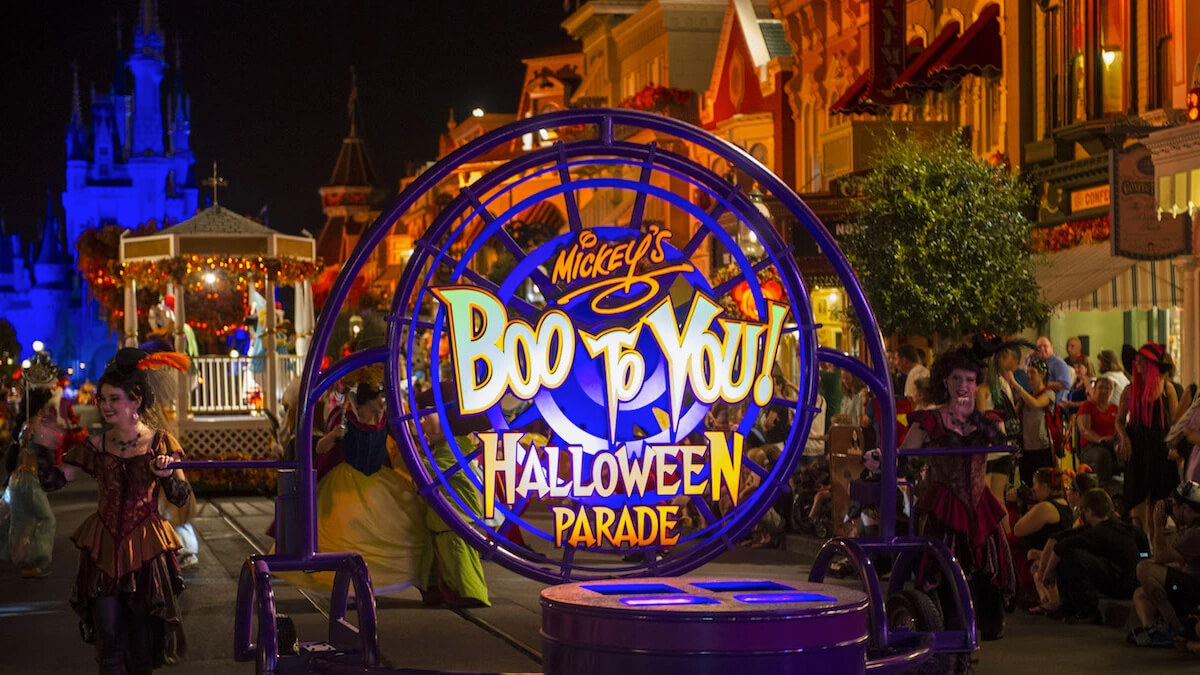
The spooky season is already in full swing at Disney parks on both coasts. On August 9th, the first of 38 Mickey’s Not-So-Scary Halloween Party (MNSSHP) nights for 2024 kicked off at Florida’s Magic Kingdom. Meanwhile, over at Disney California Adventure, the Oogie Boogie Bash began on August 23rd and is completely sold out across its 27 dates this year.
Looking back, it’s incredible to think about how these Halloween-themed events have grown. But for Disney, the idea of charging guests for Halloween fun wasn’t always a given. In fact, when the very first Mickey’s Not-So-Scary Halloween Party debuted on October 31, 1995, it was a modest one-night-only affair. Compare that to the near month-long festivities we see today, and it’s clear that Disney’s approach to Halloween has evolved considerably.
A Not-So-Scary Beginning
I was fortunate enough to attend that very first MNSSHP back in 1995, along with my then 18-month-old daughter Alice and her mom, Michelle. Tickets were a mere $16.95 (I know, can you imagine?), and we pushed Alice around in her sturdy Emmaljunga stroller—Swedish-built and about the size of a small car. Cast Members, charmed by her cuteness, absolutely loaded us up with candy. By the end of the night, we had about 30 pounds of fun-sized candy bars, making that push up to the monorail a bit more challenging.
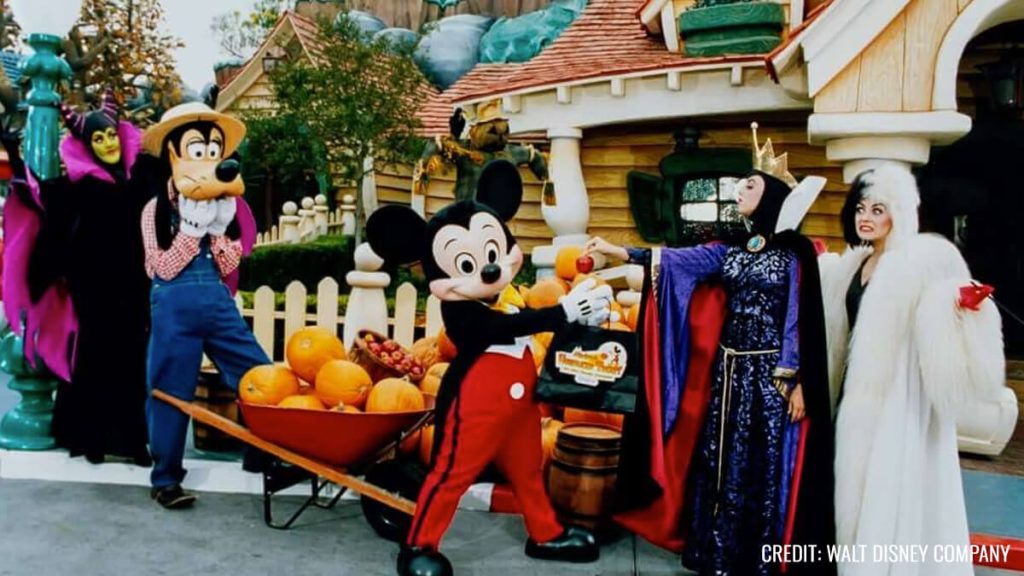
This Halloween event was Disney’s response to the growing popularity of Universal Studios Florida’s own Halloween hard ticket event, which started in 1991 as “Fright Nights” before being rebranded as “Halloween Horror Nights” the following year. Universal’s gamble on a horror-themed experience helped salvage what had been a shaky opening for their park, and by 1993, Halloween Horror Nights was a seven-night event, with ticket prices climbing as high as $35. Universal had stumbled upon a goldmine, and Disney took notice.
A Different Approach
Now, here’s where Disney’s unique strategy comes into play. While Universal embraced the gory, scare-filled world of horror, Disney knew that wasn’t their brand. Instead of competing directly with blood and jump-scares, Disney leaned into what they did best: creating magical, family-friendly experiences.
Thus, Mickey’s Not-So-Scary Halloween Party was born. The focus was on fun and whimsy, not fear. Families could bring their small children without worrying about them being terrified by a chainsaw-wielding maniac around the next corner. This event wasn’t just a Halloween party—it was an extension of the Disney magic that guests had come to expect from the parks.
Disney had some experience with seasonal after-hours events, most notably Mickey’s Very Merry Christmas Party, which had started in 1983. But the Halloween party was different, as the Magic Kingdom wasn’t yet decked out in Halloween decor the way it is today. Disney had to create a spooky (but not too spooky) atmosphere using temporary props, fog machines, and, of course, lots of candy.
A key addition to that first event? The debut of the Headless Horseman, who made his eerie appearance in Liberty Square, riding a massive black Percheron. It wasn’t as elaborate as the Boo-to-You Parade we see today, but it marked the beginning of a beloved Disney Halloween tradition.
A Modest Start but a Big Future
That first MNSSHP in 1995 was seen as a trial run. As Disney World spokesman Greg Albrecht told the Orlando Sentinel, “If it’s successful, we’ll do it again.” And while attendance was sparse that night, there was clearly potential. By 1997, the event expanded to two nights, and by 1999, Mickey’s Not-So-Scary Halloween Party had grown into a multi-night celebration with a full-fledged parade. Today, in 2024, it’s a staple of the fall season at Walt Disney World, offering 38 nights of trick-or-treating, character meet-and-greets, and special entertainment.
Universal’s Influence
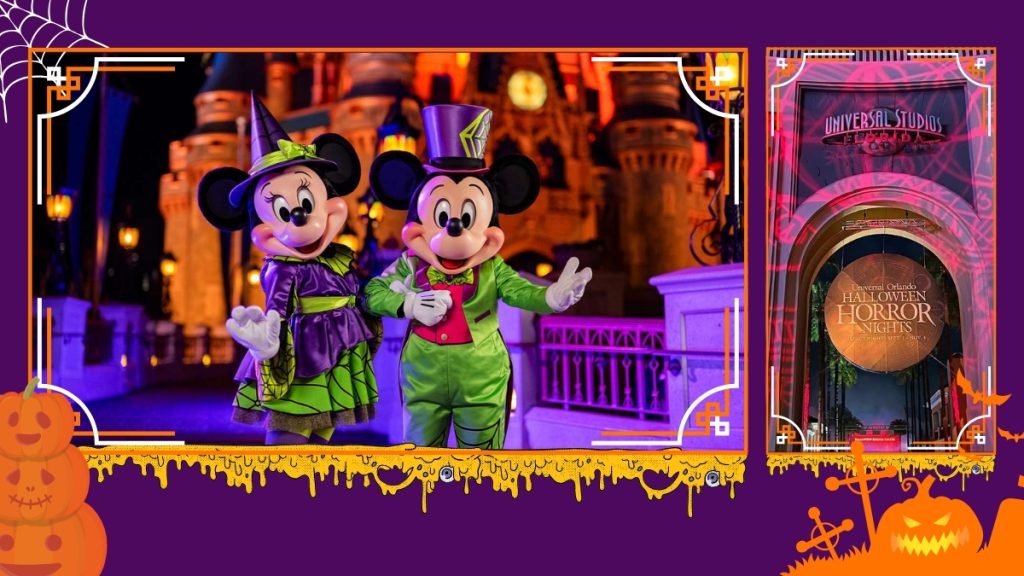
It’s interesting to reflect on how Disney’s Halloween event might never have existed without the competition from Universal. Just as “The Wizarding World of Harry Potter” forced Disney to step up their game with “Star Wars: Galaxy’s Edge,” Universal’s success with Halloween Horror Nights likely spurred Disney into action with MNSSHP. The friendly rivalry between the two parks has continually pushed both to offer more to their guests, and we’re all better off because of it.
So the next time you find yourself trick-or-treating through the Magic Kingdom, watching the Headless Horseman gallop by, or marveling at the seasonal fireworks, take a moment to appreciate how this delightful tradition came to be—all thanks to a little competition and Disney’s commitment to creating not-so-scary magic.
For more Disney history and behind-the-scenes stories, check out the latest episodes of the I Want That Too podcast on the Jim Hill Media network.
-
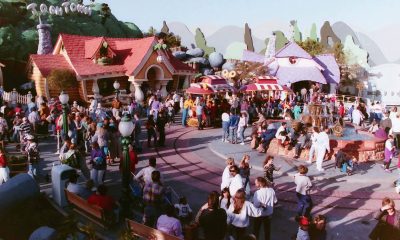
 History10 months ago
History10 months agoThe Evolution and History of Mickey’s ToonTown
-
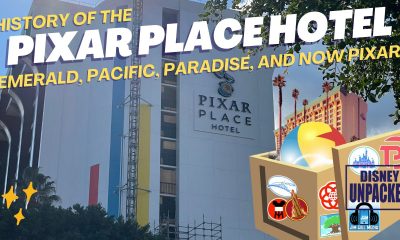
 History11 months ago
History11 months agoUnpacking the History of the Pixar Place Hotel
-
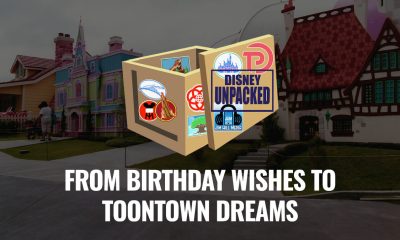
 History11 months ago
History11 months agoFrom Birthday Wishes to Toontown Dreams: How Toontown Came to Be
-
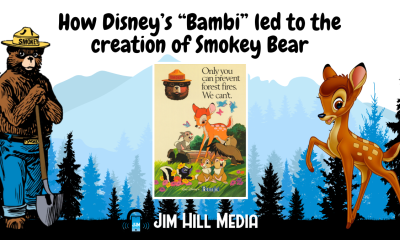
 Film & Movies8 months ago
Film & Movies8 months agoHow Disney’s “Bambi” led to the creation of Smokey Bear
-

 News & Press Releases10 months ago
News & Press Releases10 months agoNew Updates and Exclusive Content from Jim Hill Media: Disney, Universal, and More
-

 Merchandise8 months ago
Merchandise8 months agoIntroducing “I Want That Too” – The Ultimate Disney Merchandise Podcast
-
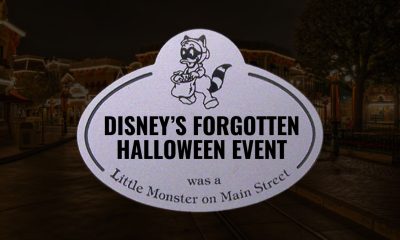
 Theme Parks & Themed Entertainment3 months ago
Theme Parks & Themed Entertainment3 months agoDisney’s Forgotten Halloween Event: The Original Little Monsters on Main Street
-
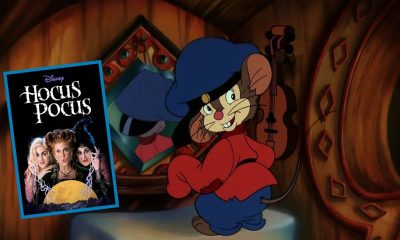
 Film & Movies3 months ago
Film & Movies3 months agoHow “An American Tail” Led to Disney’s “Hocus Pocus”








